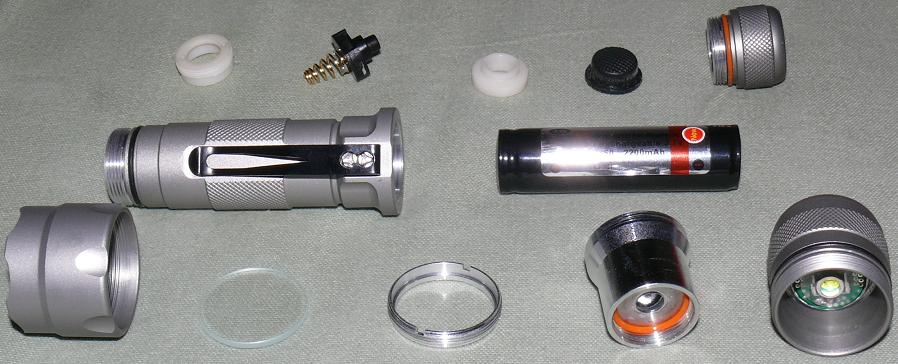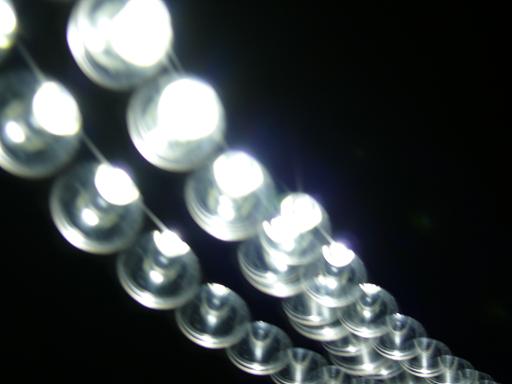
HuntLight FT-01XSE Cree P4
The new HuntLight is one of my favorites. It has a Cree P4, HA, AR glass window, five levels, SOS, strobe, and can operate on 2xCR123A, 2xRCR, or 1x18650. Total dynamite.
Okay, let's get the cons out of the way first.
These flaws make this light merely fantastic instead of perfect.
Now, on to the light's pros, which are the bulk of the review!

Yes, the word "HuntLight TM" was inscribed twice, with one inscription vertically separated from the other.
This light looks exactly the same as the FT-01, which has an excellent reputation as a well-built, no-nonsense light. This version, the FT-01XSE Cree P4, adds several features to that workhorse, including:
Being a Cree light, it has excellent sidespill. As compared to the standard FT-01, which has lux at one meter of 10 at the edge and 40 right up against the corona, the FT-01XSE Cree has much beefier spill. The following chart shows hotspot and spillbeam lux readings, current draw, and wattage. All readings were taken with a freshly-charged 18650 at 4.1V.
Level |
Current Draw |
Wattage |
Hotspot Lux |
Lux near spill edge |
Lux near corona |
|---|---|---|---|---|---|
1 |
0.07A |
0.287W |
290 |
2 |
10 |
2 |
0.21A |
0.861W |
930 |
5 |
30 |
3 |
0.38A |
1.558W |
1590 |
15 |
50 |
4 |
0.56A |
2.296W |
2250 |
30 |
90 |
5 |
0.83A |
3.403W |
3100 |
40 |
110 |
This light has a wide hotspot and bright spill, making it a wonderful general-purpose light. The hotspot has a very faint line across it, most likely from the bond wires. It's so faint, in fact, that I'm only three-fourths certain that it's there. If you're actually using the light, there's no possible way you'll notice it.
Speaking of using the light, it makes an excellent rollerblading light (I haven't tried biking with it). I left home with it on my belt in a MUL, using an Argo HP and a ProPoly 3C for light. On my way back, I tried out the XSE, and the difference was, well, night and day. The HP was dim and splotchy - pretty much useless, serving only to increase my visibility to drivers, and the ProPoly's beam was way too throwy and tight to be useful for this purpose. The XSE, however, lit up the entire width of the sidewalk with a smooth and even blast of light. It made my trip immensely easier, letting me see obstacles at any distance I chose. I'll definitely use it again the next time I blade at night.
The picture below shows the components of the light.

In normal use, all you'll need to worry about is unscrewing the tailcap, which consists of all the parts in the back (top) row, and replacing the battery. The pictured level of disassembly is unecessary and discouraged in the field.
The first click of the tailswitch will turn the light on at full brightness. If you turn the light off for less than ten seconds and then back on, either by clicking the switch twice or gently tapping it once, the light will dim down a single step. After this, there are three progressively dimmer output levels, followed by an SOS, and ending with a rapid strobe. Switch modes again while in the strobe mode, and the light will start over at full brightness. If you don't want to cycle through modes, leave the light off for at least ten seconds, and it will start at the beginning at full brightness the next time you turn it on.
See the PWM?

Overall, this is one incredible light. Perhaps the next version will incorporate current regulation and a brightness ring, along with a recessed tailswitch for tailstand capabilities. That would be just about perfect.